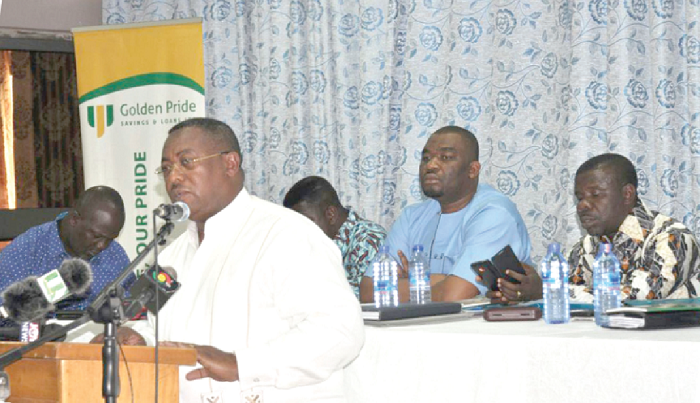
Wage disparity in mining sector: Senior staff earn 9yrs pay of juniors
A research on income inequality in the local mining sector has revealed that it will take the junior staff, who form the bulk of mineworkers, a minimum of nine years to earn what the top executives earn in a month.
Majority of these top executives, whose earnings account for 49.8 per cent of the industry’s income share, are expatriates, the study, which was conducted by the Research Department of the Ghana Mineworkers’ Union (GMWU), found.
The findings of the study were communicated to members of the union by its General Secretary, Mr Prince William Ankrah, at the opening session of GMWU’s National Executive Council meeting in Kumasi.
Mr Ankrah explained that the results further showed that the Gini coefficient, which measures the extent to which the distribution of income deviates from the perfect line of equality on the Lorenzo curve, stood at 0.526 for 2015.
Advertisement
“This means that there is a very high income distributional inequality among employees in the mining industry of Ghana,” he said.
He explained that while the top 10 per cent of the population, made up of predominantly expatriates, earned 49.8 per cent of the overall income share, the bottom 10 per cent, made up of junior staff, earned only 3.1 per cent of total income share.
“Shockingly, in a top-bottom income analysis, the ratio of the highest earner, which is GH¢180,066.90 or US$56,270.9, to the least earner (GH¢1,617.02 or US$505.31) in the industry is 1:111.36,” Mr Ankrah said at the meeting that was attended by the thousands of mineworkers nationwide.
“Expressed in another form, it will take the least earner nine or more years of "hard labour” to earn a month’s salary of the top earner,” he added.
Impact on pension
Beyond impoverishing employees, the General Secretary of the GMWU said the unfair distribution of income among mineworkers meant that their pension contribution was also affected.
It that some mineworkers would retire with handsome rewards and others retired with meager pensions, he said.
This required that the government put in place immediate steps to help address the challenge, he said, pointing to the magnitude of evidence produced by the union’s study.
“This paradox is certainly outrageous, considering the preponderance of evidence exposed by the study. It, therefore, requires an urgent and a concerted approach to dealing with this scary and ugly situation in the remuneration landscape of the mining sector,” Mr Ankrah said.
Proposed solution
Income disparity in the mining sector is an age-old headache that local workers have often solutions to.
Last year, the Quadrennial Delegates Conference of the union tasked its leadership to aggressively pursue a global remuneration strategy that will place appropriate values on mining skills “contrary to the current practice in the industry, where earnings are heavily skewed in favour of colour and geography rather than skills.”
That task formed part of a phase one strategy on the union's remuneration strategy dubbed 'Agenda US$500'.
After achieving some success, Mr Ankrah said it was now time for the union to move to second phase, which will aim at bridging the inequality gap, correcting income/skills mismatch and placing appropriate prices on skills in-line with global benchmarks.
He explained that the initiative would also aim at ensuring that miners’ incomes appreciate correspondingly with pensions, which is and has always being the heartbeat of the GMWU.
As an association that prioritises the welfare of its members, Mr Ankrah said it was always the desire of the union to see miners earn a decent working pay, as well as, a decent pension in their retirement life hence the push for equal pay for same jobs done.
Galamsey
The Chairman of the union, Mr Kwarko Mensah Gyarkari, reiterated calls on the government to weed out illegal miners, popularly called galamsey.
He explained that the menace had, over the years, spread into legally acquired mining concessions and that has dented the image of the sector.
He mentioned the Owere Mine at at Konongo, Meson at Bibiani and AngloGold Ashanti at Obuasi as some of the legally acquired mines that galamsey operators have encroached on.
“If steps are not taken by those who call the short to stop this wanton disregard to law and order, within the shortest time possible, the whole mining industry would be swept by these galamsayers.”
“Unfortunately, this threatens the survival and existence of a vibrant industry that generates for the economy huge income in the form of royalty and taxes, and yet has been subjected to political football,” he bemoaned.

